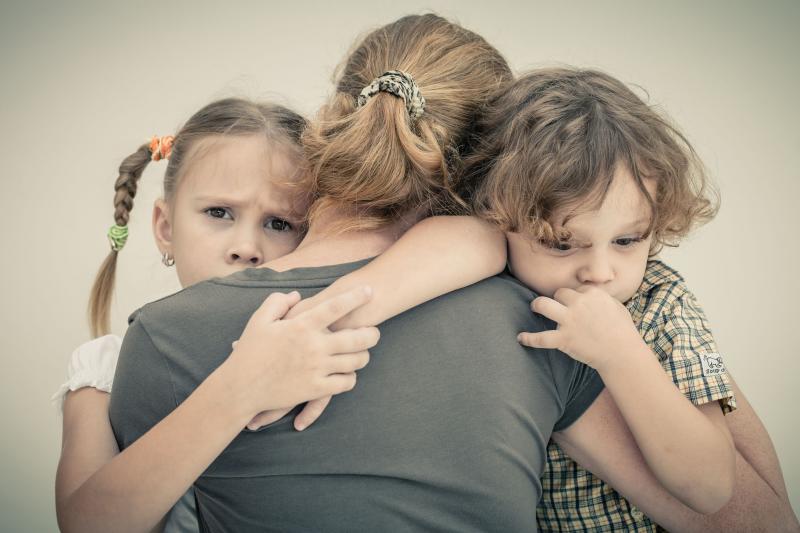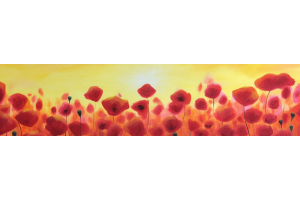
When a loved one dies, adults have enough trouble explaining to themselves what has happened. Then they encounter the time to tell children, and they often do not know what to say. Families should understand that it is all right not to know the right answers. A loving approach to explaining death to a child, with respect given for a child’s grief and need to say goodbye, helps parents to guide their children through this difficult part of life.
Explaining the Concept of Death
The first thing that parents and loved ones should remember is that death is very much a part of life. Even if a child is very young, s/he will learn soon enough that living beings are not immortal. It does not help children to tell them that their parents or grandparents will never die, as it creates a framework of mistaken trust. Instead, families can explain the concept of death to children in a supportive, age-appropriate environment. Very young children tend to interpret statements literally, so parents should choose their words carefully. Telling a child that a beloved grandparent “is lost” or “went to sleep” creates a great deal of confusion for the child, who now wonders if it is possible to fall asleep and never wake. Analogies often help children understand. For example, plants die in the fall, and toys wear out and break over time. Families can explain that human bodies also wear out and eventually die, like other living things. In fact, this process happens to everyone eventually.
Discussing Belief Systems
What happens to people after they die is both a biological and a spiritual matter. What a child is told depends largely on the belief systems of the parents. To start with, families can describe some of the things that happen when a person dies: • the heart stops beating • the person stops breathing • the brain stops functioning and all the pieces put together mean that the person has died. They will not become alive again, as the end of this process is permanent. What happens to the soul is an entirely different matter. Most religions have a defined concept of the afterlife. In many cases, children learn that their loved ones have gone on to a better or different place, where their suffering on Earth is over. As much as possible, secondary family members should honor the parents’ wishes about religious teachings to a child. It does not help a child’s grieving process to have several conflicting descriptions of what happens after death.
Children’s Expression of Grief
Just as adults, children choose to express grief in a variety of ways. Some may become quiet and withdrawn. Others may act as though nothing has happened. Watching a child who is coping with grief often exposes biases that adults have about how grief should be expressed. A child may seem to grieve only for a short time, while another child may take months or even years to process the feelings of loss and sadness. In addition to the typical adult expressions of grief, children may also exhibit different behaviors. They may act out frequently as an expression of anger or helplessness. They may regress and ask for help in activities that they used to do independently. The child also may ask what has happened over and over again, as a way to emphasize that the truth is difficult to believe.
Opportunities to Talk
Since no experience of grief occurs in a vacuum, parents must be acutely aware of the effect their own grief has on a child going through the same process. In particular, children tend not to want to “bother” an adult who is obviously very unhappy about the death of a loved one. This may lead to the child deciding not to burden an adult with their questions or thoughts about death. However, this can cause the child to become more unhappy, feeling like his/her feelings have nowhere to go. As a way to prevent this from happening, families should give ample opportunity for children to talk about how they are feeling and to ask questions that they have. Adults feel better when they are given the ability to talk about their loved ones without worrying that they are making others sad, and it is the same with children. Very young children are not as articulate about their feelings. However, given the opportunity to express themselves, they will help the adults around them figure out what they need.
Planning a Memorial Celebration
If the person who died was a close friend or family member to children, if at all possible, the memorial celebration or funeral should be planned with accommodation for children in mind. Saying goodbye to a loved one is important for people of all ages, so children should be allowed to participate wherever possible. Long services tend to be difficult for children to manage. As such, if there is the option, provide a small portion of the service or celebration in which a child can come and say something or just be around others who are facing the same loss. Some memorial celebrations can be made truly child-centered, with activities, food, games and music that are pleasing to both children and adults.
Creating Remembrance
Children tend to associate tangible items with people, and they maintain memories better this way. Very young children can take an item and hold on to it, the way they may not be able to do with intangible memories. This means that a child may appreciate the ability to have a keepsake of a loved one even more than an adult. If the loved one who died was cremated, children may want to keep a small portion of the ashes as a reminder that the person will always be with them. Keepsake urns come in a variety of styles, from sand sculptures to keychains. Adolescents may prefer cremation jewelry as a personal expression of love, while young children might love to receive a teddy bear keepsake urn. Death is an inevitable part of life, and children must all eventually learn this fact. When families allow children to grieve, involve them in their own grief, allow them to participate in a memorial and create a valuable keepsake for them, they help their children to process death in a healthy fashion.





